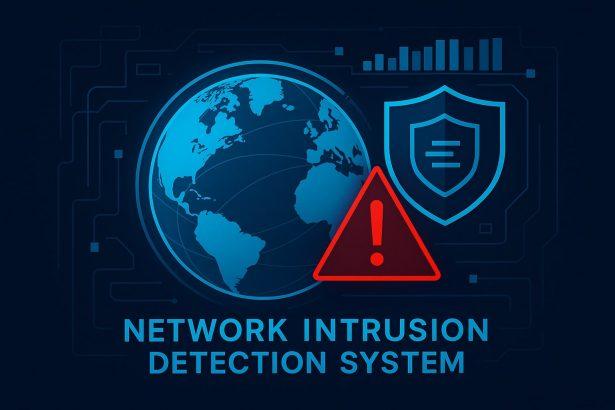As enterprises become increasingly reliant on interconnected digital systems, the sophistication and frequency of cyber threats have escalated dramatically. From credential-based intrusions to advanced persistent threats (APTs), attackers exploit network vulnerabilities to compromise systems and data. In this context, implementing a robust Network Intrusion Detection System (NIDS) is a strategic necessity. For cybersecurity professionals and IT managers alike, understanding NIDS is critical to developing a resilient cybersecurity architecture.
Protect Your Business’ Cybersecurity Now!
Protect your business from evolving cyber threats with our tailored cybersecurity solutions designed for companies of all sizes. From malware and phishing to ransomware protection, our multi-license packages ensure comprehensive security across all devices, keeping your sensitive data safe and your operations running smoothly. With advanced features like real-time threat monitoring, endpoint security, and secure data encryption, you can focus on growth while we handle your digital protection. **Request a free quote today** for affordable, scalable solutions and ensure your business stays secure and compliant. Don’t wait—get protected before threats strike!
Defining Network Intrusion Detection Systems
A Network Intrusion Detection System is an advanced cybersecurity mechanism designed to continuously inspect and analyze network traffic for evidence of suspicious behavior or policy violations. Functioning in parallel with preventive controls such as firewalls, NIDS serves as a detective control, identifying threats that have bypassed traditional defenses.
Core Capabilities of NIDS:
- Traffic Inspection: Analyzes packet flows across network segments to detect irregularities.
- Signature Matching: Utilizes databases of known attack vectors to identify specific threats.
- Anomaly Detection: Applies statistical and machine learning models to flag deviations from normative behavior.
- Alert Generation and Event Logging: Generates real-time alerts and retains detailed logs for forensic analysis.
- Protocol Decoding: Deconstructs application-layer protocols to identify misuse or exploitation.
Strategic Rationale for NIDS Deployment in Business Environments
While large enterprises often dominate the headlines following cyber incidents, small and mid-sized businesses (SMBs) represent a growing target for threat actors due to their limited resources and potentially lower security maturity. A properly configured NIDS provides:
- Proactive threat identification before adversaries can escalate privileges or exfiltrate data.
- Detection of insider threats, including unauthorized access or misuse by legitimate users.
- Alignment with regulatory frameworks such as GDPR, HIPAA, and PCI DSS through enhanced auditability.
- Comprehensive forensic capabilities, facilitating incident response and legal action.
- Augmented visibility into east-west traffic, revealing lateral movement within the network.
Research indicates that enterprises employing NIDS reduce mean time to detection (MTTD) by over 60%, dramatically improving response efficacy and minimizing breach impact.
Categories of NIDS Architectures
Signature-Based Detection
This traditional method relies on predefined attack signatures. It excels in identifying known threats with high accuracy but is inherently reactive and unable to detect novel attack vectors.
Anomaly-Based Detection
This approach models expected network behavior and flags deviations. While effective against zero-day exploits and sophisticated attacks, it requires tuning to reduce false positives.
Hybrid Detection Systems
Hybrid models integrate both signature and anomaly-based detection, enabling broader threat coverage and balancing precision with adaptability.
Evaluating NIDS Solutions: Key Functional Criteria
When selecting a NIDS platform for enterprise deployment, consider the following capabilities:
- Real-time analytics with minimal latency in alert generation.
- Scalability to accommodate growth in users, devices, and traffic volume.
- Compatibility with existing infrastructure, including SIEM platforms, endpoint protection, and firewalls.
- Continuous signature updates informed by threat intelligence feeds.
- Configurable interfaces and dashboards to streamline analyst workflows.
- Granular policy control enabling tailored detection criteria.
- Inspection of encrypted traffic, leveraging SSL/TLS decryption capabilities where appropriate.
Comparative Overview of Security Technologies
| Tool | Primary Function | Distinctive Role in Security Stack |
|---|---|---|
| Firewall | Controls ingress and egress traffic | Preventive control, rule-based |
| Antivirus | Scans for malware on endpoints | Host-level protection |
| NIDS | Detects malicious activity in network flows | Network-level threat detection and alerts |
| SIEM | Aggregates and correlates security data | Centralized visibility and compliance reporting |
| Endpoint Detection & Response (EDR) | Monitors and responds to endpoint threats | Device-level detection and response |
Implementation Best Practices for NIDS
- Optimal sensor placement at ingress/egress points and within internal segments.
- Frequent updates of detection signatures and anomaly baselines.
- Comprehensive training for security operations personnel on triage and response procedures.
- Integration with incident response workflows to enable rapid containment.
- Synergistic deployment with SpyHunter’s multi-license anti-malware for endpoint visibility and control.
- Retention of historical logs for compliance and retrospective analysis.
Case Analysis: NIDS Prevents Data Exfiltration
A regional financial institution identified anomalous outbound data flows during off-hours, flagged by its NIDS. Upon investigation, the security team discovered an exploited VPN vulnerability that granted unauthorized access. Due to prompt alerting, the institution contained the breach before customer data was exfiltrated. This incident highlighted the role of NIDS in bridging detection gaps left by perimeter defenses.
Conclusion: Elevating Cyber Defense with NIDS
For cybersecurity professionals, a Network Intrusion Detection System is not merely a tool—it’s a strategic asset. By enabling real-time threat visibility, forensic readiness, and compliance facilitation, NIDS forms a critical component of any layered defense model.
Enhance your cyber resilience. Pair NIDS with endpoint solutions like SpyHunter’s multi-license anti-malware to implement a defense-in-depth strategy tailored to today’s threat landscape.
Protect Your Business’ Cybersecurity Now!
Protect your business from evolving cyber threats with our tailored cybersecurity solutions designed for companies of all sizes. From malware and phishing to ransomware protection, our multi-license packages ensure comprehensive security across all devices, keeping your sensitive data safe and your operations running smoothly. With advanced features like real-time threat monitoring, endpoint security, and secure data encryption, you can focus on growth while we handle your digital protection. **Request a free quote today** for affordable, scalable solutions and ensure your business stays secure and compliant. Don’t wait—get protected before threats strike!




